- Clone
- 23C6 (See other available formats)
- Regulatory Status
- RUO
- Workshop
- V S246
- Other Names
- Vitronectin receptor, Integrin αV/β3, ITGAV, ITGB3
- Isotype
- Mouse IgG1, κ
- Ave. Rating
- Submit a Review
- Product Citations
- publications
| Cat # | Size | Price | Quantity Check Availability | Save | ||
|---|---|---|---|---|---|---|
| 304417 | 100 µg | 181€ | ||||
| 304418 | 1 mg | 551€ | ||||
CD51/CD61 is an integrin complex known as αVβ3. It is expressed at high levels on osteoclasts, endothelial cells, and melanoma cells and at low levels on platelets and macrophages. CD51 is a heterodimer composed of disulfide-linked 125 kD and 24 kD proteins. CD61 is also a member of the integrin family known as gpIIIa or β3 integrin. It is a 110 kD common β subunit of CD51/CD61 or CD41/CD61 complex. CD51/CD61, also known as the vitronectin receptor, mediates the binding of platelets to immobilized vitronectin without prior activation. Other ligands include RGD-containing proteins such as fibrinogen, fibronectin, von Willebrand factor (vWf), laminin, thrombospondin and the neural adhesion molecule L1. CD51/CD61 also mediates cell-cell adhesion via interaction with CD31. CD51/CD61 acts as an activation-independent receptor for platelet attachment and spreading on vitronectin and other RGD-containing proteins, including matrix components. The 23C6 antibody has been reported to be useful for blocking studies.
Product DetailsProduct Details
- Verified Reactivity
- Human
- Reported Reactivity
- African Green, Chicken, Cynomolgus, Rabbit
- Antibody Type
- Monoclonal
- Host Species
- Mouse
- Formulation
- 0.2 µm filtered in phosphate-buffered solution, pH 7.2, containing no preservative.
- Endotoxin Level
- Less than 0.01 EU/µg of the protein (< 0.001 ng/µg of the protein) as determined by the LAL test.
- Preparation
- The Ultra-LEAF™ (Low Endotoxin, Azide-Free) antibody was purified by affinity chromatography.
- Concentration
- The antibody is bottled at the concentration indicated on the vial, typically between 2 mg/mL and 3 mg/mL. Older lots may have also been bottled at 1 mg/mL. To obtain lot-specific concentration and expiration, please enter the lot number in our Certificate of Analysis online tool.
- Storage & Handling
- The antibody solution should be stored undiluted between 2°C and 8°C. This Ultra-LEAF™ solution contains no preservative; handle under aseptic conditions.
- Application
-
FC - Quality tested
ICC - Verified
IHC-F, IP, Block - Reported in the literature, not verified in house - Recommended Usage
-
Each lot of this antibody is quality control tested by immunofluorescent staining with flow cytometric analysis. For flow cytometric staining, the suggested use of this reagent is ≤ 0.5 µg per million cells in 100 µL volume. It is recommended that the reagent be titrated for optimal performance for each application.
- Application Notes
-
Additional reported applications (for the relevant formats) include: immunoprecipitation5, immunohistochemical staining of acetone-fixed frozen tissue sections5, immunofluorescence microscopy5, and blocking of cell adhesion4,6. The LEAF™ Purified antibody (Endotoxin <0.1 EU/µg, Azide-Free, 0.2 µm filtered) is recommended for functional assays (Cat. No. 304414).
- Application References
-
- Knapp WB, et al. 1989. Leucocyte Typing IV Oxford University Press. New York.
- Schlossman S, et al. Eds. 1995. Leucocyte Typing V. Oxford University Press. New York.
- Horton M, et al. 1991. Exp. Cell Res. 195:368.
- Takahashi R, et al. 1999. Blood 93:1951. (Block)
- Davies J, et al. 1989. J. Cell Biol. 109:1817. (IF, IHC, IP)
- Deregibus MC, et al. 2007. Blood doi:10.1182/blood-2007-03-078709. (FC, Block)
- Barau A, et al. 2010. J. Ultrasound Med. 29:173. PubMed
- RRID
-
AB_2832591 (BioLegend Cat. No. 304417)
AB_2832592 (BioLegend Cat. No. 304418)
Antigen Details
- Structure
- Integrin, CD51/CD61 heterodimer, 24 kD
- Distribution
-
Platelets, B subset, activated T cells, monocytes/macrophages, osteoblasts, endothelial cells, melanoma
- Function
- Adhesion, bone metabolism and apoptosis
- Ligand/Receptor
- Vitronectin, von Willebrand factor, fibrinogen, thrombospondin, osteopontin, denatured collagen
- Cell Type
- B cells, Endothelial cells, Macrophages, Monocytes, Osteoclasts, Platelets, T cells
- Biology Area
- Angiogenesis, Cell Adhesion, Cell Biology, Costimulatory Molecules, Immunology, Innate Immunity
- Molecular Family
- Adhesion Molecules, CD Molecules
- Antigen References
-
1. Davies J, et al. 1989. J. Cell Biol. 109:1817.
2. Nesbitt S, et al. 1993. J. Biol. Chem. 268:16737. - Gene ID
- 3685 View all products for this Gene ID 3690 View all products for this Gene ID
- UniProt
- View information about CD51 CD61 on UniProt.org
Related Pages & Pathways
Pages
Related FAQs
- Do you guarantee that your antibodies are totally pathogen free?
-
BioLegend does not test for pathogens in-house aside from the GoInVivo™ product line. However, upon request, this can be tested on a custom basis with an outside, independent laboratory.
- Does BioLegend test each Ultra-LEAF™ antibody by functional assay?
-
No, BioLegend does not test Ultra-LEAF™ antibodies by functional assays unless otherwise indicated. Due to the possible complexities and variations of uses of biofunctional antibodies in different assays and because of the large product portfolio, BioLegend does not currently perform functional assays as a routine QC for the antibodies. However, we do provide references in which the antibodies were used for functional assays and we do perform QC to verify the specificity and quality of the antibody based on our strict specification criteria.
- Does BioLegend test each Ultra-LEAF™ antibody for potential pathogens?
-
No, BioLegend does not test for pathogens in-house unless otherwise indicated. However, we can recommend an outside vendor to perform this testing as needed.
- Have you tested this Ultra-LEAF™ antibody for in vivo or in vitro applications?
-
We don't test our antibodies for in vivo or in vitro applications unless otherwise indicated. Depending on the product, the TDS may describe literature supporting usage of a particular product for bioassay. It may be best to further consult the literature to find clone specific information.
Other Formats
View All CD51/61 Reagents Request Custom Conjugation| Description | Clone | Applications |
|---|---|---|
| FITC anti-human CD51/61 | 23C6 | FC |
| PE anti-human CD51/61 | 23C6 | FC |
| Purified anti-human CD51/61 | 23C6 | FC,ICC,IHC-F,IP,Block |
| Alexa Fluor® 488 anti-human CD51/61 | 23C6 | FC |
| Alexa Fluor® 647 anti-human CD51/61 | 23C6 | FC |
| Biotin anti-human CD51/61 | 23C6 | FC |
| APC anti-human CD51/61 | 23C6 | FC |
| Ultra-LEAF™ Purified anti-human CD51/61 | 23C6 | FC,ICC,IHC-F,IP,Block |
Compare Data Across All Formats
This data display is provided for general comparisons between formats.
Your actual data may vary due to variations in samples, target cells, instruments and their settings, staining conditions, and other factors.
If you need assistance with selecting the best format contact our expert technical support team.
-
FITC anti-human CD51/61
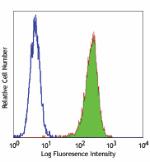
Human melanoma cell line M21 stained with 23C6 FITC -
PE anti-human CD51/61
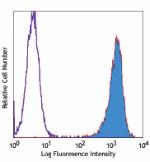
Human melanoma cell line M21 stained with 23C6 PE -
Purified anti-human CD51/61
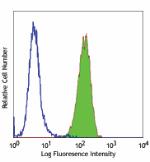
Human melanoma cell line M21 stained with purified 23C6, fol... 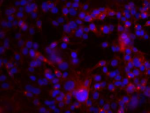
MDA-MB231 breast cancer cell line was stained with anti-huma... -
Alexa Fluor® 488 anti-human CD51/61
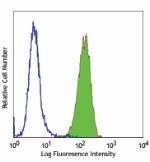
Human melanoma cell line M21 stained with 23C6 Alexa Fluor&r... -
Alexa Fluor® 647 anti-human CD51/61
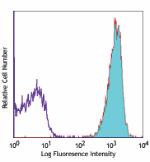
Human melanoma cell line M21 stained with 23C6 Alexa Fluor&r... -
Biotin anti-human CD51/61
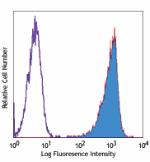
Human melanoma cell line M21 stained with biotinylated 23C6,... -
APC anti-human CD51/61
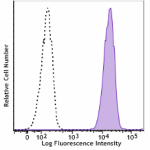
Human melanoma cell line M21 stained with CD51/61 (clone 23C... -
Ultra-LEAF™ Purified anti-human CD51/61
 Login / Register
Login / Register 










Follow Us